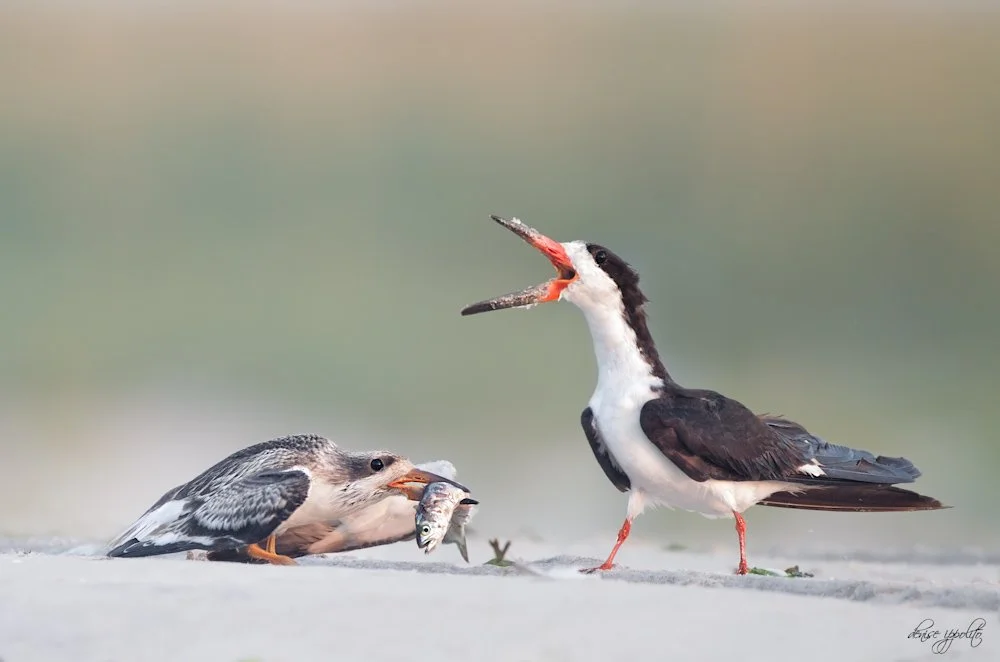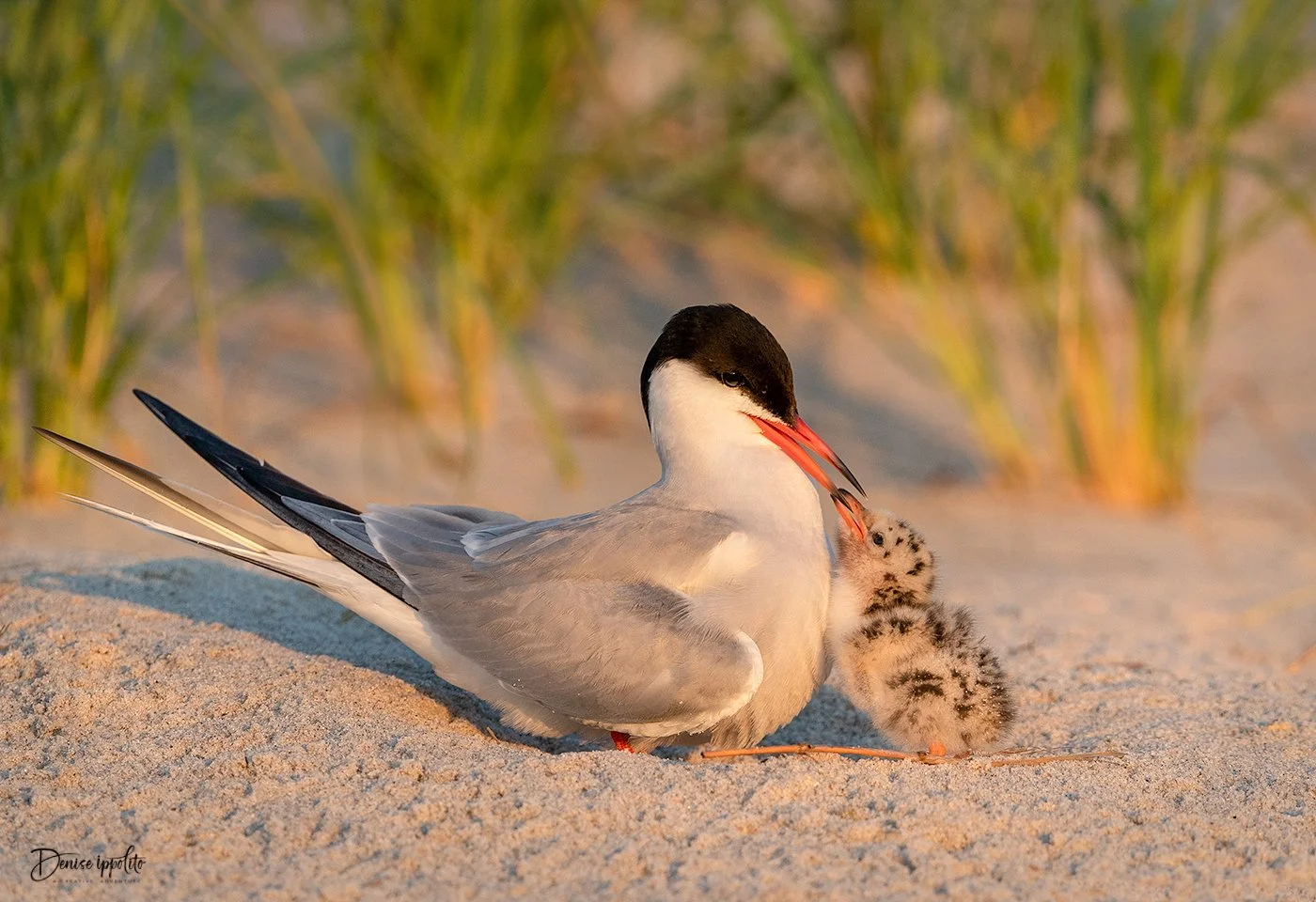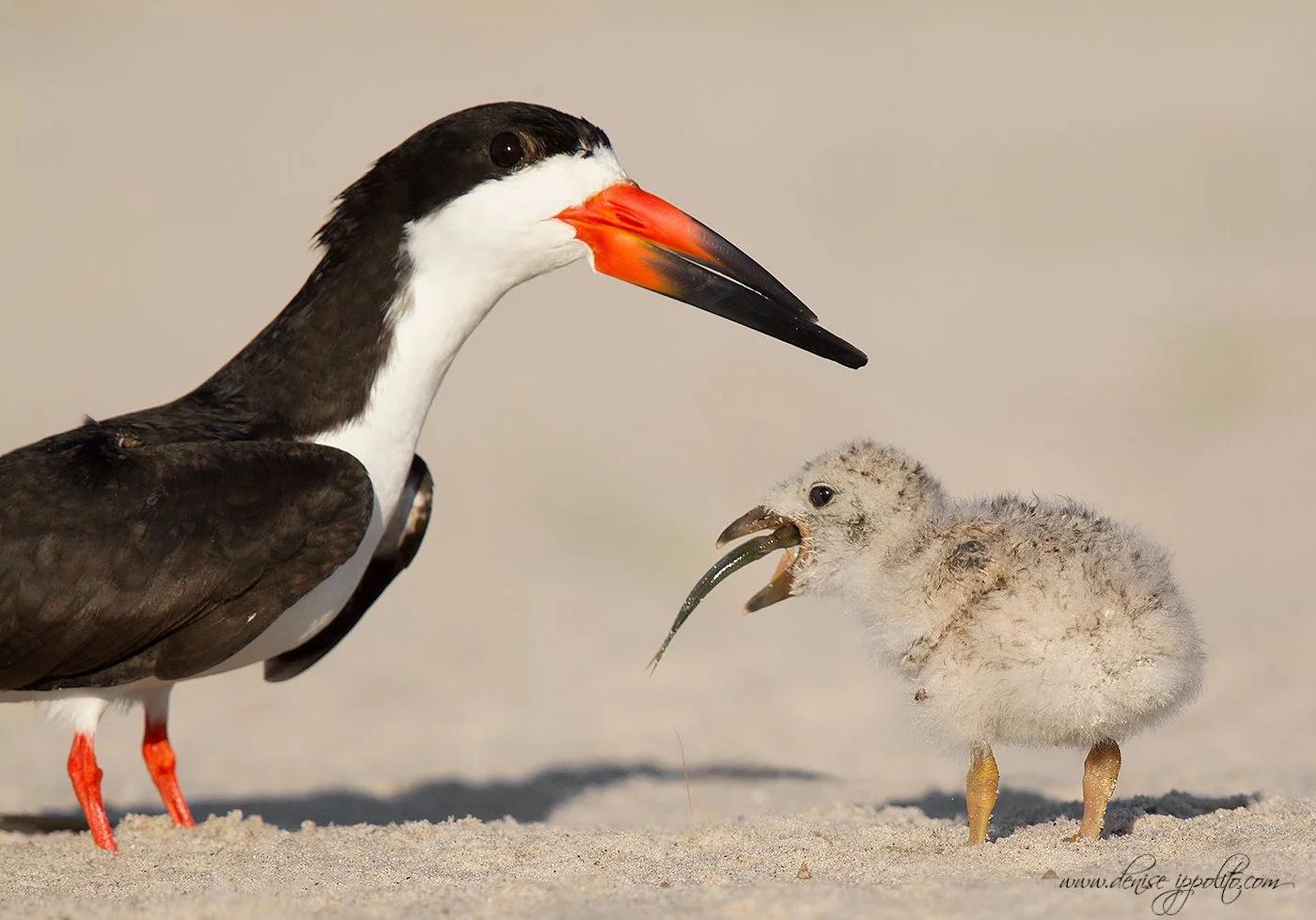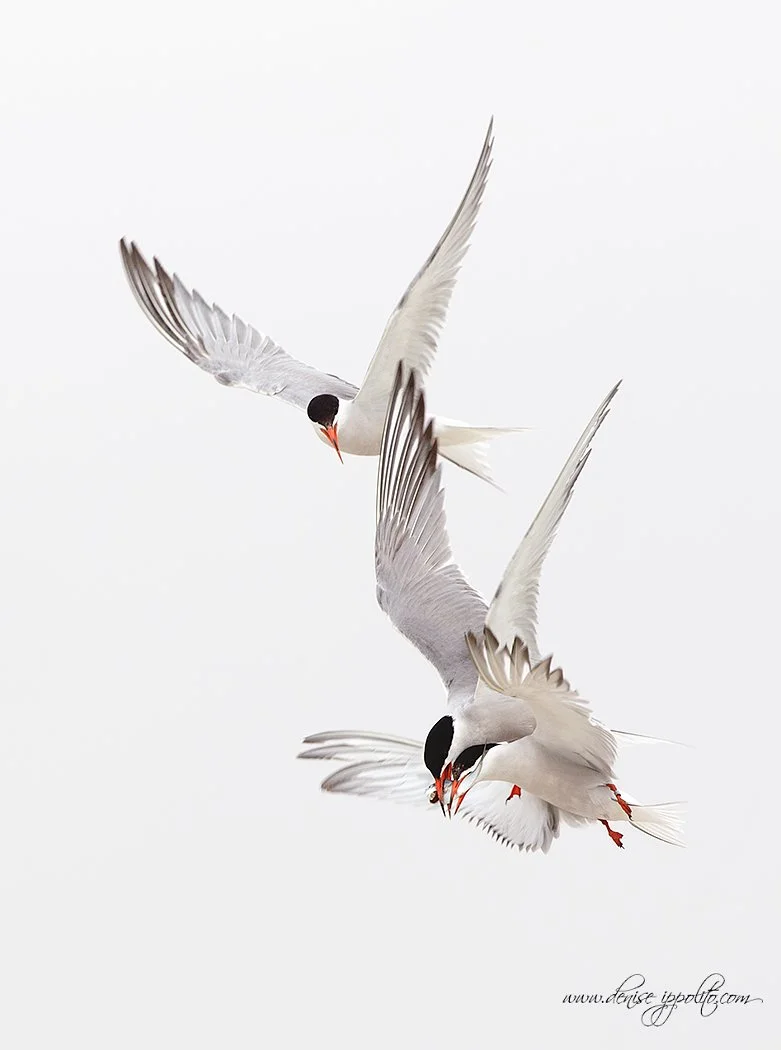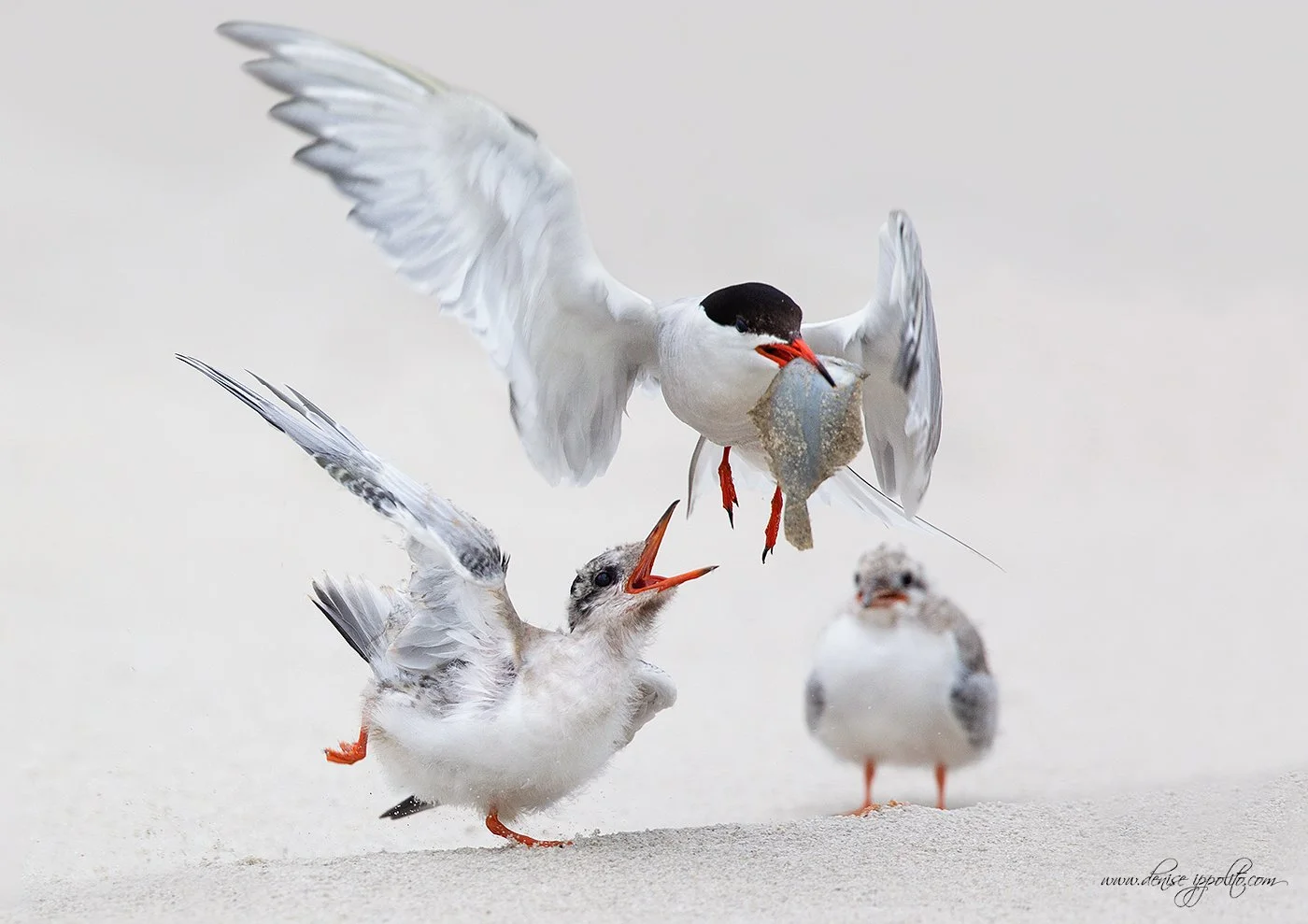During one of my workshops at Nickerson Beach in NY, I told the story of how I first started photographing birds and how they became my main focus. The truth was that eagles and bears were at the very top of my list when I first started out. Living in NJ meant that unless I traveled, I would not be photographing too often. I looked for subjects that excited me. Since I lived on the coast, there were plenty of shorebirds; I decided they would be the main focus of my photography.
I paid my dues at Sandy Hook in New Jersey where we (my good friend and shooting partner for over 20 years and I) would walk out each morning, about 1/3 mile to the beach. We made our way through thousands of biting mosquitoes; we fondly referred to it as the "death march". Every single inch of your body needed to be covered, including your hands and face. Years ago, the beach area was not roped off (only the dunes were) and visitors could walk out to this small cove in the pre-dawn and get on sun angle and wait for the small shorebirds to feed by the surf's edge at sunrise. It was great shooting with the right conditions, and we did this for years building our portfolios and knowledge. Towards the end of the season, as the nights got cooler, so did the water temperatures. We would lay belly down in the cold water hoping to photograph the juvenile and southbound migrant birds. It was so much fun learning all the different ID's and behavior. Not to mention trying to age them... I bought a ton of shorebird ID books and went online trying to learn as much as possible about these tiny little creatures that I came to love.
Soon I found out about Nickerson Beach in Long Island, NY. I talked my friend into going; it is about a 200-mile round trip from my house. Factor into that, the bridge tolls and gas; we fondly referred to our daily treks to Nickerson as our expensive non-paying jobs :). If we got on the road by 3:15am we could make it in time for sunrise. We would shoot all morning and leave the beach just as the light would get harsh to make it home by noon. Sometimes, our trips were in vain and neither one of us would take a single picture. That never stopped us from making the long drive over and over again, we were hooked. Most mornings we never saw a single soul except for an occasional beach walker or beach cleaner.
It was there at the beach that I would put my passion for art and nature to the test. Since I had already learned most of the ID's and the bird's behaviors, I started to spread my photography wings. I worked hard to create images that evoked the feelings that I was looking for but felt were missing in many of the bird photos I had viewed on the web. I saw shot after shot of bird portraits, most of which concentrated on getting the bird tight in the frame with the perfect head angle-but that was it. There would be no connection for me. I wanted more. I wanted my images to have more feeling. I wanted to see the preening poses and intimate moments that you can really only see when looking through a big lens. I loved being on the beach in the early morning; there is something magical about watching the birds stir and take flight as the sun hits the horizon.
I remember several years ago I was counselled by a Marketing Agent in exchange for some Photoshop and image review sessions. I thought that it would be a great way for me to learn more about how to market myself. His advice to me was that I should give up bird photography and concentrate only on my creative photography. He said that I was diluting my "brand". First of all, I didn't know I had a "brand" and second of all I would never give up something that gave me so much pleasure. Watching birds preen, fly and interact with each other has always been a great thrill for me. I also can't think of anything more peaceful to do with my time. In addition to that, I love the thrill of flight photography. I decided to ignore his suggestions and continue with my own thoughts on the matter. If I love, it, there is a great chance that someone else will love it too. Do what you love, the rest will follow... And so it began, I would combine my love for nature and art. Blending them together as one genre of photography & loving every minute of it.
Below is a gallery of images from those days at the beach…
Ingredients:
Long telephoto lens-mostly 500-800mm
Tripod or skimmer pod (I used to use a hard frisbee that I drilled a hole on the side to put a carabiner through so it could attach to my belt).
Teleconverters
Blower
Clean, angled paint brush, to clear sand off the lens and camera
Water shoes so that you can go near or into the water
Backpack to put all your paraphernalia in as you comb the beach
Patience and passion
Recipe:
Get up extra early to arrive at your location well before sunrise. Make sure you have your gear set-up in the parking lot before going out. Check your camera settings so that you are somewhat prepared before walking out. Get low, as you’ll want to have a lower angle to assist with better backgrounds and a more intimate view of your subject/subjects. Using a slow shutter speed can be a great option when the light is low, also silhouettes are another good option when shooting in low light.
Once the sun comes out try some backlighting for a more interesting shot. Also, flight photography is a good option once the light is bright enough to use a fast shutter speed. Try your best to keep one hand (preferably your right) free of sand at all times or the sand will end up everywhere. Mix this all together with a smile and you should be in store for a great experience.

